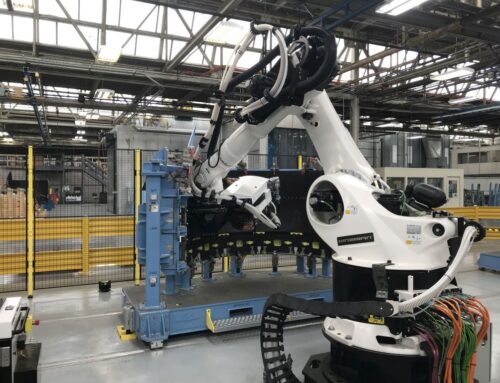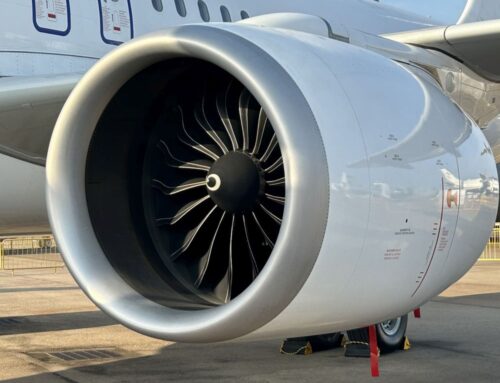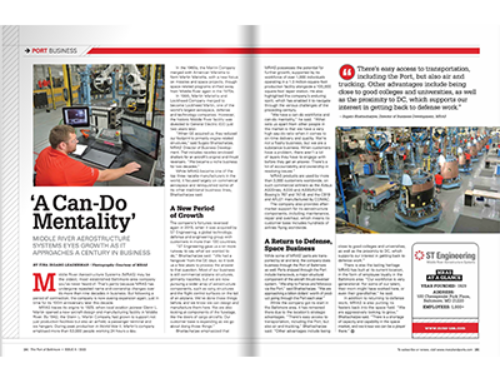The integrated engine nacelle for Bombardier’s Global 7500 – one of the leading large-cabin business jets in service today – is now included in the growing list of maintenance, repair and overhaul (MRO) activities at Middle River Aerostructure Systems, which is a subsidiary of ST Engineering.

Two Passport nacelle inlets are shown in MRAS’ maintenance, repair and overhaul shop at the company’s Middle River, Maryland facility.
This state-of-the-art nacelle is produced by the 50/50 Nexcelle joint venture of MRAS with France’s Safran Nacelles, and it is utilized on the Global 7500’s two Passport turbofan engines from GE Aviation. In the Nexcelle work-sharing agreement, MRAS has the lead industrial role for the nacelle system, perfectly positioning the company for MRO support as the fleet of Global 7500s continues to grow – with deliveries to customers surpassing the 50-aircraft milestone.
The current activity for Passport nacelles in the MRO shop at MRAS’ Middle River, Maryland facility is focused on the nacelle inlet’s lip skin, which is produced using highly polished aluminum, and is an important element from both the aerodynamic and aesthetic standpoints.
As the leading-edge segment, the lip skin serves multiple key roles, including directing airflow into – and around – the nacelle. The lip skin also is heated to prevent a build-up of ice during flight. Additionally, it is carefully polished, with the mirror-quality finish being a highly visible feature for the business jet.
Its position as the nacelle’s leading edge makes the lip skin subject to damage from such sources as unintended contact with airport service vehicles and ground handling incidents – leading to the repair work.
MRAS’ major investment in the nacelle spares pool
To best serve customers with Global 7500s, MRAS is building up an exchange pool of all major nacelle repairable components that it produces (including the inlets), enabling replacement units to be readily available for swap-out with business jet operators who typically do not have the on-hand spares stock resources of commercial airlines.
Paul Snyder, an MRAS Senior Customer Support Manager, said the repair of lip skins can involve up to several hundred work hours in a process that requires the removal/drilling out of hundreds of fasteners, as well as removing composite inner and outer barrel assemblies from the remaining inlet support structures.

A nacelle inlet for the CFM56 jet engine is inspected in the maintenance, repair and overhaul shop at MRAS.
“One of the goals at MRAS is to make these complex repairs as cost-effective as possible for the customer, using our in-house MRO expertise and applying our know-how as the nacelle’s original manufacturer,” Snyder explained. “We also have made major investments in spare exchange components so that Global 7500 operators can quickly receive a serviceable replacement unit and get their aircraft back in the air as quickly as possible.”
The Passport nacelle activity is in addition to MRAS’ maintenance, repair and overhaul expertise as a certified repair station for nacelle systems on the CFM International CFM56-5B, CFM56-7B and International Aero Engines V2500. These powerplants equip two widely used single-aisle category jetliners: Boeing’s 737NG and the Airbus A320 family, respectively.
MRAS also is certified for repairs on the composite thrust reverser transcowls that it produces for Airbus’ A320neo family – one of the world’s best-selling single-aisle jetliner product lines.
This engine nacelle maintenance, repair and overhaul know-how at MRAS complements the capabilities of its ST Engineering parent company, which is the world’s largest airframe MRO solutions provider.



